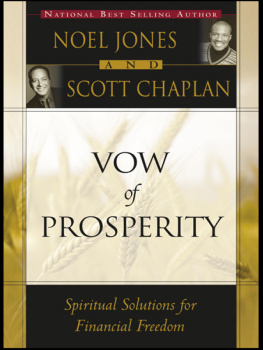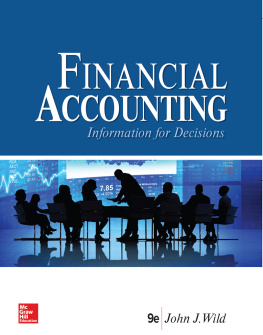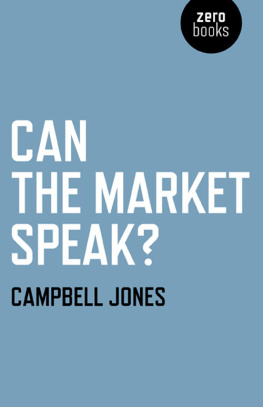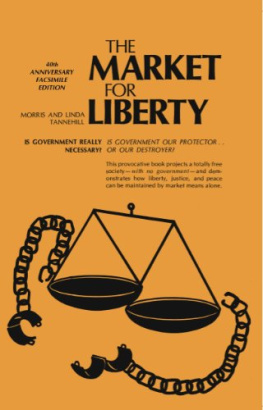
In Financial and Market Integration of Vulnerable People Linda Jones brings a breadth of thinking from a number of authors to engage on how the poorest can be served by market systems development and inclusive financial services. She lays out a challenge for practitioners to take sustainable approaches to work with the most vulnerable. It is up to the reader to act on the important analysis she and others have provided.
Dan Norell, Senior Technical Advisor,
Economic Development, World Vision
Everyone committed to understanding issues of vulnerability worldwide should read this book.
Dr David Lawson, University of Manchester
Practical Action Publishing Ltd
The Schumacher Centre,
Bourton on Dunsmore, Rugby,
Warwickshire, CV23 9QZ, UK
www.practicalactionpublishing.org
Practical Action Publishing, 2015
All the chapters in this book, except for chapter 1, were first published as articles in Enterprise Development and Microfinance, an international journal. The right of the editor to be identified as author of the editorial material and of the contributors for their individual chapters have been asserted under sections 77 and 78 of the Copyright Designs and Patents Act 1988.
All rights reserved. Except for chapter 7, no part of this publication may be reprinted or reproduced or utilized in any form or by any electronic, mechanical, or other means, now known or hereafter invented, including photocopying and recording, or in any information storage or retrieval system, without the written permission of the publishers. Chapter 7 is created under a Creative Commons Attribution Non-commercial No-derivatives CC BY-NC-ND license: http://creativecommons.org/licenses/by-nc-nd/4.0/
Product or corporate names may be trademarks or registered trademarks, and are used only for identification and explanation without intent to infringe.
A catalogue record for this book is available from the British Library.
A catalogue record for this book has been requested from the Library of Congress.
ISBN 978-1-85339-887-2 Hardback
ISBN 978-1-85339-888-9 Paperback
ISBN 978-1-78044-887-9 Library Ebook
ISBN 978-1-78044-888-6 Ebook
Citation: Jones, L. (ed.) (2015) Financial and Market Integration of Vulnerable People: Lessons from development programmes, Rugby, UK: Practical Action Publishing,
Since 1974, Practical Action Publishing has published and disseminated books and information in support of international development work throughout the world. Practical Action Publishing is a trading name of Practical Action Publishing Ltd (Company Reg. No. 1159018), the wholly owned publishing company of Practical Action. Practical Action Publishing trades only in support of its parent charity objectives and any profits are covenanted back to Practical Action (Charity Reg. No. 247257, Group VAT Registration No. 880 9924 76).
The views and opinions in this publication are those of the author and do not represent those of Practical Action Publishing Ltd or its parent charity Practical Action. Reasonable efforts have been made to publish reliable data and information, but the authors and publisher cannot assume responsibility for the validity of all materials or for the consequences of their use.
Typeset by Allzone Digital Services Limited
Printed in the UK |  |
Contents
Linda Jones
Jamie M. Zimmerman and Jamie Holmes
Kate Druschel Griffin and Malini Tolat
Anne Leymat
Leif Atle Beisland and Roy Mersland
Dietmar Stoian, Jason Donovan, John Fisk and Michelle F. Muldoon
Alexandra Snelgrove and Lemmy Manje
Sally Walkerman, Michael Bowles, Trinnie Cartland and Sally Ross
Christine Faveri, Kerry Jane Wilson and Perveen Shaikh
Hiroyuki Tanaka
Ben Fowler and Linda Jones
Linda Jones
Linda Jones is an internationally recognized consultant in applying market systems approaches (value chains, financial systems, M4P, PSD) to inclusive economic development programmes that successfully leverage the contributions of women, smallholder farmers and other vulnerable groups. Dr Jones works globally with multiple clients and donors, and is currently directing MEDAs work in investment-led development.
Linda Jones
Abstract
This introductory chapter starts by examining how we define poverty and destitution, including the Human Development Index and the Multidimensional Poverty Index. It considers which groups of people are most likely to be poor and vulnerable; they are often smallholder farmers, women, young people, people with disability, excluded minorities and the entrenched poor. It goes on to outline the chapters, debates and programmatic approaches that follow, including the use of smart subsidy, cash transfers, savings groups and the pushpull approach.
Keywords: financial inclusion; value chains; Human Development Index; Multidimensional Poverty Index; destitution; poverty
Introduction
This book presents experiences from development programmes on the integration of vulnerable people into financial and market systems (including value chains) through development programming.
Smallholder farmers, women earners, young job-seekers, people with disability and the entrenched poor often struggle to sustain themselves or contribute to the wellbeing of their households. Despite our knowledge of this situation, and our collective desire to remedy it, microfinance and enterprise development programmes have repeatedly been unable to reach the most vulnerable for a variety of reasons discussed throughout this volume. At the same time, some programmes and approaches are making advances, and the writings included here provide conceptual and practical insights into how we can contribute more to the wellbeing of those most in need. First, however, we turn to an examination of who the most vulnerable are and where they can be found (MEDA, 2014).
How do we define poverty?
In order to know who is vulnerable, it is helpful to understand poverty in general how do we define poverty, where are the poor clustered, and how can we characterize the lives of the most vulnerable? The commonly used UNDP Human Development Index (HDI) ranks countries across dimensions: health, education, and income. However, HDI is a summary measure of average achievement across measures and does not reflect on inequalities, poverty, human security, empowerment, etc. (UNDP, 2014a). The World Banks US$1.25 (PPP)1 per capita per day measure of absolute poverty is also widely used (including in the HDI) and is helpful for understanding which house-holds are the poorest in terms of income.2 But both the HDI and $1.25 PPP are lacking when we consider the multi-dimensional characteristics of individual household poverty. For example, although Ethiopia and Uzbekistan both reported about 50 per cent of the population living under $1.25 per day in 2010 by multidimensional measures that capture living standards, almost 90 per cent of Ethiopians live in poverty, while only a small percentage of Uzbekistanis do (Morrell, 2011).














